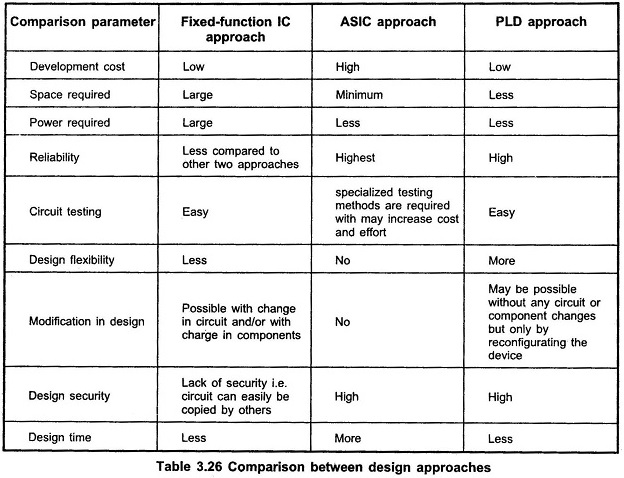Design of Digital Circuits:
We have seen the design of digital circuits using fixed function ICs. There are two more approaches for the Design of Digital Circuits.
- Use of application specific integrated circuits (ASICs)
- Use of programmable logic devices (PLDs)
In the fixed function IC approach, we have to use various fixed function ICs to implement different functional blocks in the digital circuit. On the other hand, in ASIC, a single IC is designed and manufactured to implement the entire circuit. In the third approach programmable logic devices are used to implement logic functions. The main advantage of PLD approach is that PLDs can be easily configurable by the individual user for specific applications.
The Table 3.26 shows the comparison between these three design approaches.
PLDs can be reprogrammed in few seconds and hence gives more flexibility to experiment with designs. Reprogramming feature of PLDs also make it possible accept changes/modifications in the previously design circuits. These two main advantages and others discussed in Table 3.26 make PLDs very popular in digital design.
According to architecture, complexity and flexibility in programming PLDs are classified as
- ROMs : Read Only Memories
- PLAs : Programmable Logic Arrays
- PAL : Programmable Array Logic
- FPGA : Field Programmable Gate Arrays
- CPLDs : Complex Programmable Logic Devices
